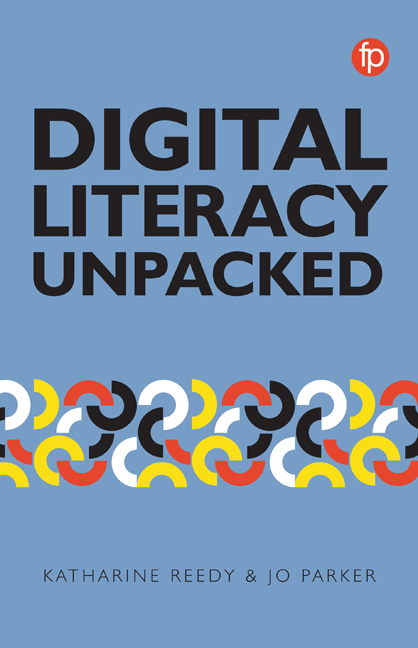Book contents
- Frontmatter
- Contents
- List of figures and case studies
- Foreword
- Notes on Contributors
- Introduction
- Part I Approaching Digital Literacy
- Part II Learning in a Digital World
- Part III Developing Staff Digital Literacies
- Part IV Digital Citizens and Workers
- 11 Digital Literacy and Open Educational Practice: Digilit Leicester
- 12 Transforming the Workplace Through Digital Literacy
- 13 Critical Digital Literacy Education in the ‘Fake News’ Era
- 14 Onwards! Why the Movement For Digital Inclusion has Never Been More Important
- Conclusion
- Index
13 - Critical Digital Literacy Education in the ‘Fake News’ Era
from Part IV - Digital Citizens and Workers
Published online by Cambridge University Press: 24 September 2019
- Frontmatter
- Contents
- List of figures and case studies
- Foreword
- Notes on Contributors
- Introduction
- Part I Approaching Digital Literacy
- Part II Learning in a Digital World
- Part III Developing Staff Digital Literacies
- Part IV Digital Citizens and Workers
- 11 Digital Literacy and Open Educational Practice: Digilit Leicester
- 12 Transforming the Workplace Through Digital Literacy
- 13 Critical Digital Literacy Education in the ‘Fake News’ Era
- 14 Onwards! Why the Movement For Digital Inclusion has Never Been More Important
- Conclusion
- Index
Summary
Introduction: panic and disaster
In the 1920s the political commentator Walter Lippmann famously wrote: ‘Incompetence and aimlessness, corruption and disloyalty, panic and ultimate disaster must come to any people which is denied an assured access to the facts’ (Lippmann, 1920). This seemed to sum up the mood for many in the last few months of 2016 and through into 2017. Following Donald Trump's victory in the US presidential election, and the result of the referendum about Brexit before that, the issue of ‘fake news’ has come to dominate the real news week. The idea of fake news has emerged as one of the defining concepts of our times, with its influence stretching around the globe (BBC, 2017), and being blamed for everything from a rise in xenophobia (Solomon, 2017) to the all-out undermining of Western democracy (Cheshire, 2016). The issue has become of such public concern that it has led to parliamentary enquiries in the UK (Commons Select Committee, 2017), and the establishment of ‘collaborative journalism verification projects’ (CrossCheck, 2017), as well as major soul-searching by the large technology firms. In this chapter we examine the role that communications technology – and specifically social media – plays in the phenomenon of, and discourse around, fake news, drawing on findings from a research project we conducted into the way people interact on Facebook. Based on the implications of this research we then look at how critical digital literacy education – which combines an understanding of the affordances and implications of digital media with an awareness and sensitivity to the role the media play in everyday social politics – can assist in providing people with the knowledge and resources to make informed decisions about their consumption of information circulated online.
Filter bubbles and fake news
In the immediate aftermath of Trump's election it was social media companies such as Facebook which came in for particular and persistent criticism for their role in the way that fake news was being spread. Trotter (2016), for instance, wrote, ‘Throughout [2016's] presidential campaign, journalists have focused, correctly, on the power of Facebook to shape, distort, and ultimately control the news and information that inform and educate voters.’
- Type
- Chapter
- Information
- Digital Literacy Unpacked , pp. 179 - 190Publisher: FacetPrint publication year: 2018
- 2
- Cited by

